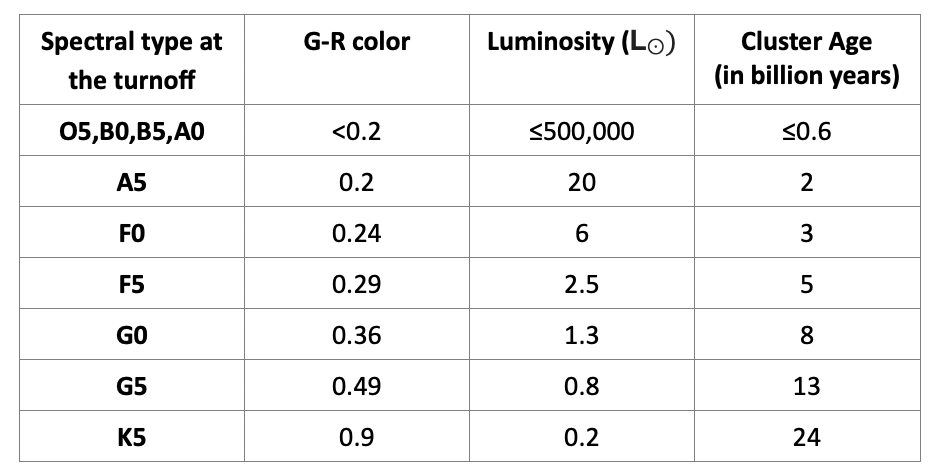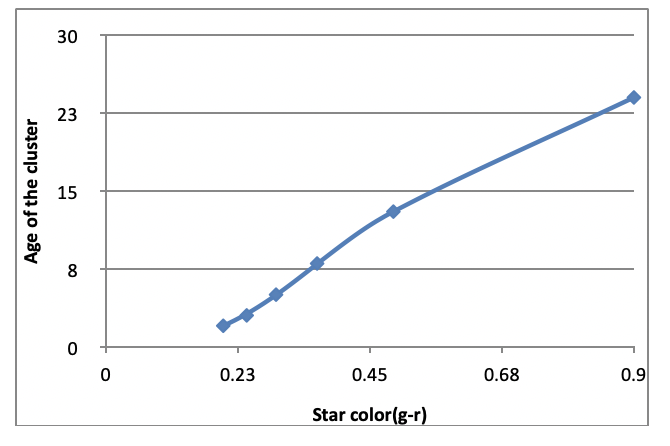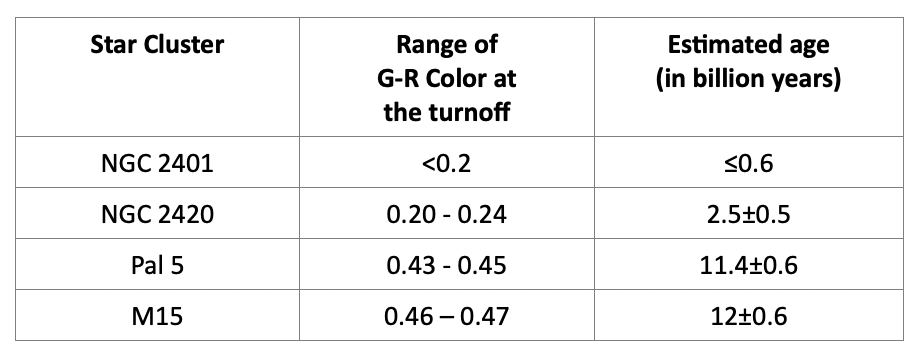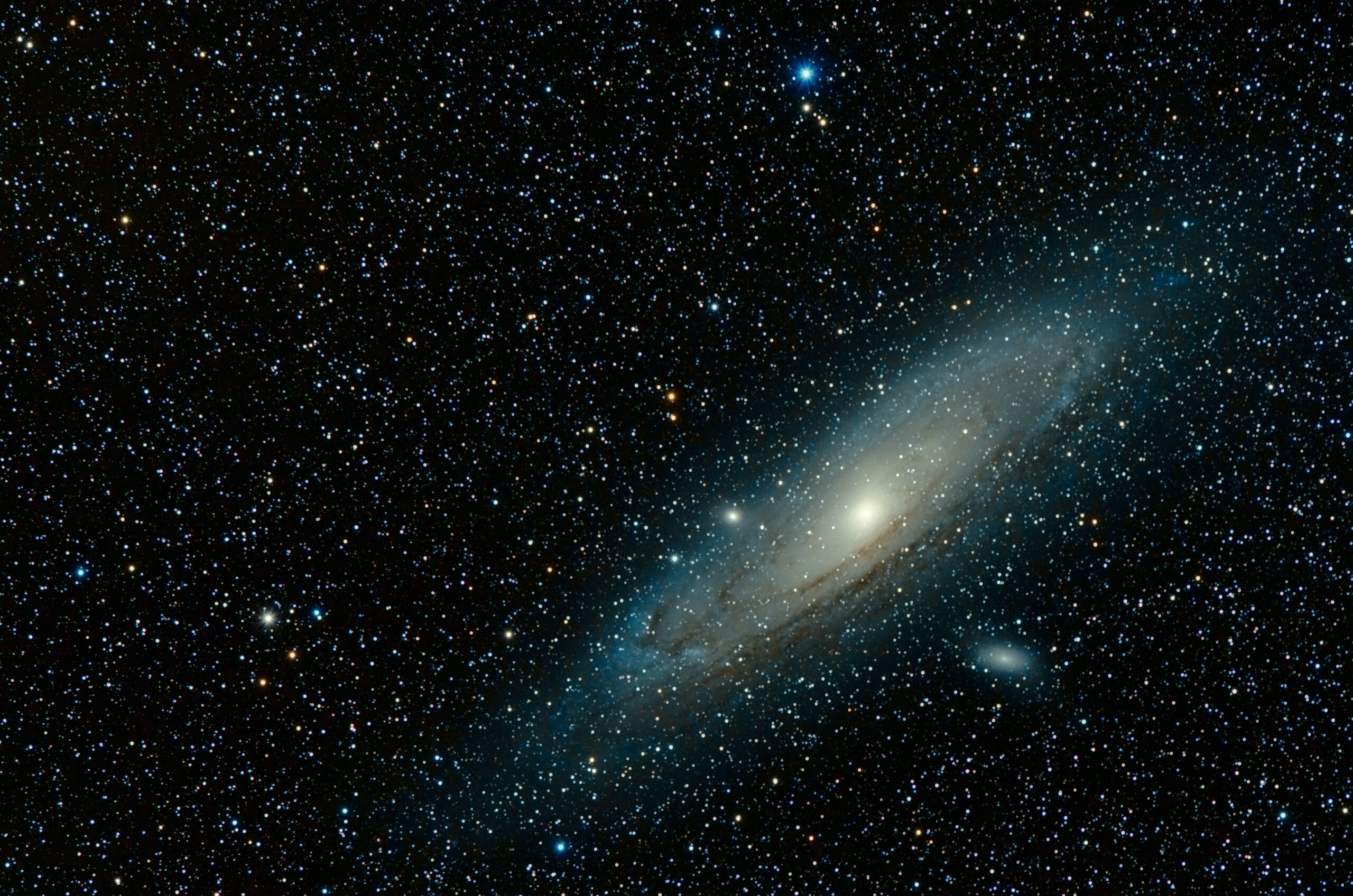
Author: Gracia Gaspar Arulraj
Notre Dame of Holy Cross School, CBSE
July 9, 2020
Introduction
Ever since mankind started gazing at the night sky, the heavens have never ceased to fascinate our human minds with its massive and luminous creations – Stars. Stars and groupings of stars have been an integral part of Cosmology for many years. Star clusters have played an important role in defining the age and the state of our universe.
The goal of this project is to calculate an estimate of the age of our universe using estimates of the ages of star clusters: NGC 2401, NGC 2420, Pal 5, and M15. This project will also provide an insight into the tools and methods used for finding the estimate.
What are Star Clusters?
Star clusters are groups of stars that share a common origin from a giant molecular gas cloud and are gravitationally bound together. They are of two distinct types: Open clusters and Globular clusters.
- Open Clusters are loose groupings of stars. They are much smaller and younger than globular clusters.
- Globular Clusters are densely packed spherical collections of ancient stars that orbit a galactic core.
Studying star clusters helps astronomers to model and study stellar evolution. It also helps astronomers to figure out an estimate of the age of the universe.
What is an HR Diagram?
The Hertzsprung-Russell diagram (HR diagram) is a scatter plot of stars showing the relationship between the stars’ absolute magnitudes or luminosities versus their spectral class or effective temperatures. The HR Diagram helps us to infer different properties of stars such as luminosity, spectral class, absolute magnitudes, and mass. It classifies the stars into four groups namely: Main Sequence, White Dwarfs, Giants, and Supergiants based on the mass of a star and its stage in the stellar evolution.
Stars in the stable phase of hydrogen burning lie along the main sequence. After the exhaustion of the main fuel, a star moves into the red giant branch.
HR Diagram and the age of a star cluster:
We can find the age of a star cluster with the help of an HR Diagram by analyzing the turnoff point in the main sequence. Turnoff point refers to a point on the HR Diagram where a star leaves the main sequence after the exhaustion of the main fuel.
Tools and Procedure
Data from Sloan Digital Sky Survey or SSDS was used for plotting an HR Diagram. Inverted images of globular clusters were taken from The Image Finding Tool of SSDS.
Excel, a spreadsheet program, was used to create the HR Diagram for the globular clusters.
The book ‘Introducing the Stars’ by Martin Beech was used as a reference for estimating the ages of the star clusters.
Results of the Project
Globular Cluster: NGC 2401

Inverted image of NGC 2401

Globular Cluster: NGC 2420


Globular Cluster: Pal 5


Globular Cluster: M15


HR Diagram of M15
The HR Diagrams of the open clusters (NGC 2401, NGC 2420) show that they are much younger compared to the globular clusters (Pal 5, M15).

Cluster ages based upon the G-R color and luminosity of the stars at the turnoff

Scatter plot showing the relationship between the age of a cluster and star color.

Using the HR Diagrams, a G-R Color range is chosen for each of the star clusters. This range is inputted in the scatterplot to arrive at these results.
Conclusion
The average from two of the oldest globular clusters Pal 5 (11.4±0.6 Gyr) and M15 (12±0.6 Gyr) is calculated to be 11.7 Gyr. Therefore it can be reasonably estimated that the universe is at least 12 billion years old.
Acknowledgements
I would like to express my sincere gratitude to my tutor Dr. Nigel Sanitt, a former lecturer at University College London, who gave me the golden opportunity to do this project. I’m extremely grateful for his constant help and support throughout this project.
About the author

